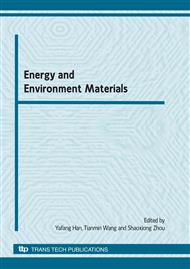p.285
p.290
p.295
p.302
p.308
p.313
p.320
p.324
p.330
Study on Tensile Fractured Surfaces and Toughening Mechanism of Ti/Ti-Al Micro-Laminate Sheet
Abstract:
Large-sized Ti/Ti-Al micro laminated thin sheet with thickness of 0.12mm was prepared by high-power electron beam physical vapor deposition technology, and then tensile tests of specimen after hot-pressing densification were carried out at room and high temperature, and tensile specimen was examined the fractured surfaces by SEM and OM. It was found that the tensile specimen under room temperature presents a compound quasi-cleavage and intergranular fracture, and a certain plastic deformation of Ti toughening layer was detected during fracture process. Tensile fractured surfaces under high temperature present the feature of compound dimple models and quasi-cleavage, furthermore, the size and the quantity of dimple exhibited an enhancing trend with test temperature increased. Results show that the cracks will stagger along the inter-laminar interface or the layer due to which micro-laminate expresses a good characteristic of delayed fracture. The toughening mechanisms are that the crack deflection and micro-bridge connection caused by the toughening layers increases crack propagation resistance.
Info:
Periodical:
Pages:
308-312
Citation:
Online since:
May 2010
Authors:
Keywords:
Price:
Сopyright:
© 2010 Trans Tech Publications Ltd. All Rights Reserved
Share:
Citation:


